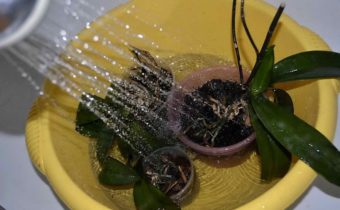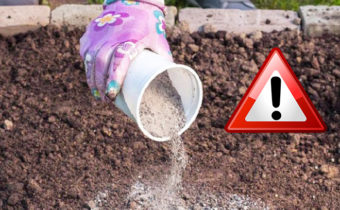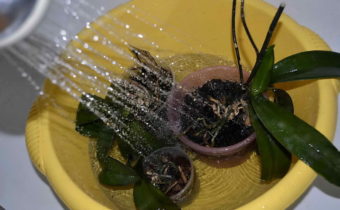Orchid roots in the air: what is it and can it be cut?
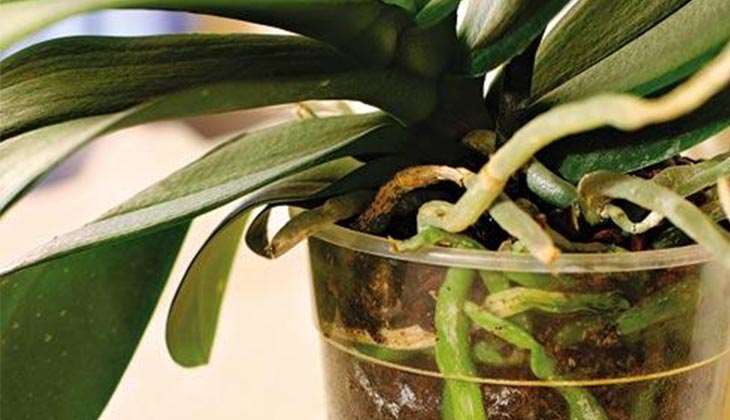
Orchids appeared on sale relatively recently, and not all flower growers manage to cope with their care, despite the fact that most of the errors are somehow related to the root system.
Why do orchids have too many aerial roots?
The roots that are in the pot should have a dense structure, without rot and shriveled voids. Moreover, their rich green color indicates a recent watering, while a whitish hue indicates that the orchid has not been soaked in water for a long time.
As for the air processes, their only difference from the pot ones is that they are located at the very top of the flower, without plunging into the ground. These roots are covered with belamen - a dense green mass, which plays the role of a kind of sponge, absorbing moisture from water and air.
A large number of orchid roots may indicate that the flower is in too wet an environment, which, in principle, is quite good for its development. But sometimes the appearance of such roots indicates a pot overflow and a rotting root system, the plant trying to compensate for the inadequate functioning by updating it.
In addition, the orchid can take root even if it is constantly in a room with too dry air, or if there is a frequent drying out of the soil.
The reasons can also be a lack of lighting or too dense substrate in the pot.
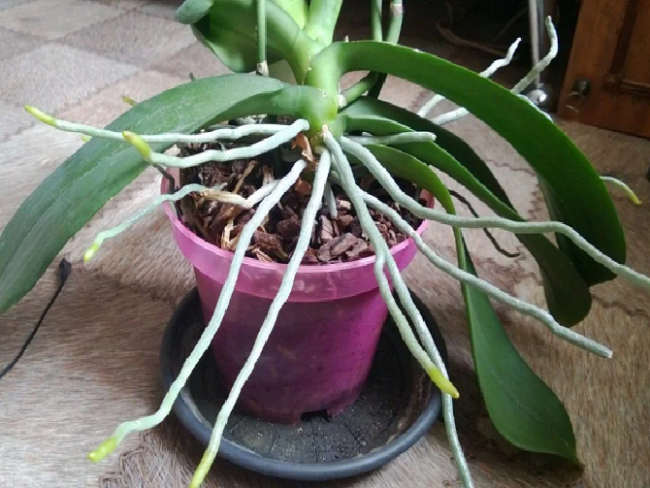
What does it mean if the roots dry out?
If orchid roots dry in a pot, gradually losing turgor and becoming empty, then first of all it is necessary to adjust the watering of the plant. Usually, prolonged soaking of a flower in water every 7-10 days changes the situation.
It’s not possible to do that with air roots, because it’s impossible to dunk them. Some lovers use regular spraying, not knowing that such a measure is quite dangerous, because if water gets into the phalaenopsis outlet, the risk of rotting of the root collar increases.
The orchid content in a well-ventilated room or in an open space will help to change everything, in which they will have time to dry completely after spraying or showering. If this is not possible, then you will have to purchase a humidifier and a sphagnum moss, which is placed on top of the flower’s wood soil and regularly spilled on the edge, providing the most precious moisture to the air roots.
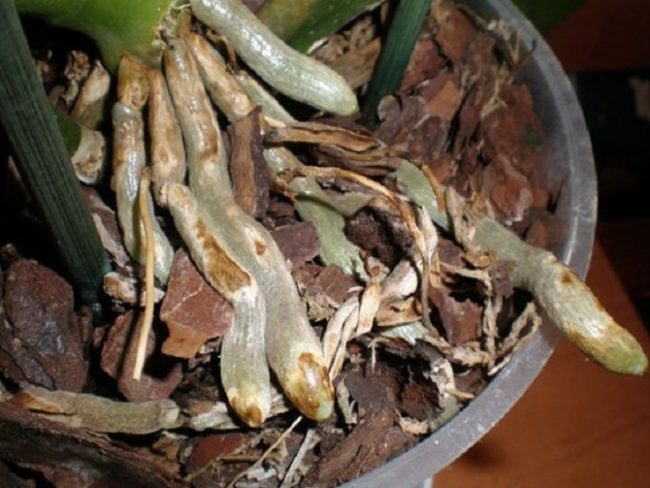
When do I need to cut
Pruning a healthy orchid root system is absolutely contraindicated, and aerial processes in this regard are no exception to the rule. Moreover, the more such roots the plant has, the higher the chance for its successful reanimation in case of rot in the rhizome or in the sinuses.
However, there are situations when trimming the roots is necessary, and above all it comes to removing dry and rotten segments. Usually, in such processes, the velamen itself is easily removed from the wire-like base, so its further stay on the roots is undesirable.
The foundation itself is also of no value, since it loses its ability to absorb moisture without velamen.This means that the roots should be cut with these wires, leaving only healthy tissue intact.
But on the contrary, it is not worth getting rid of the reddened, but preserved their integrity and density of the roots, since there is an interaction of hard water and oxygen.
Correct pruning
In order for pruning dry and decayed roots to be as painless as possible, it is recommended to follow a few simple recommendations. We are talking about the following algorithm actions:
- First of all, the plant is inspected, during which the roots to be pruned are identified.
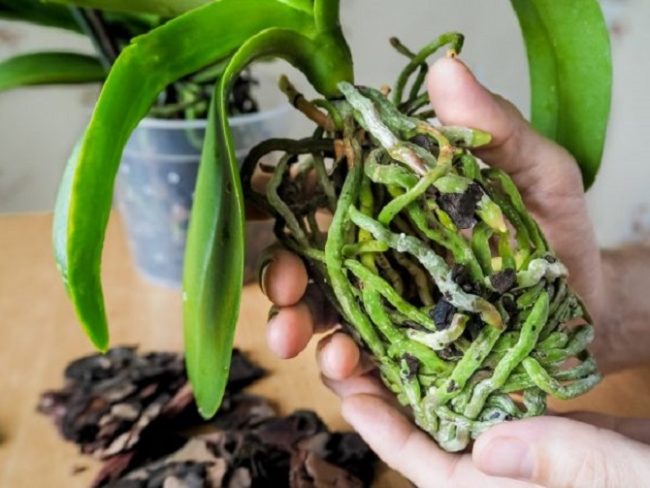
- The next stage involves trimming itself to healthy tissue, if there is one, or with a small indentation from the neck, which will require sharp scissors or garden shears.
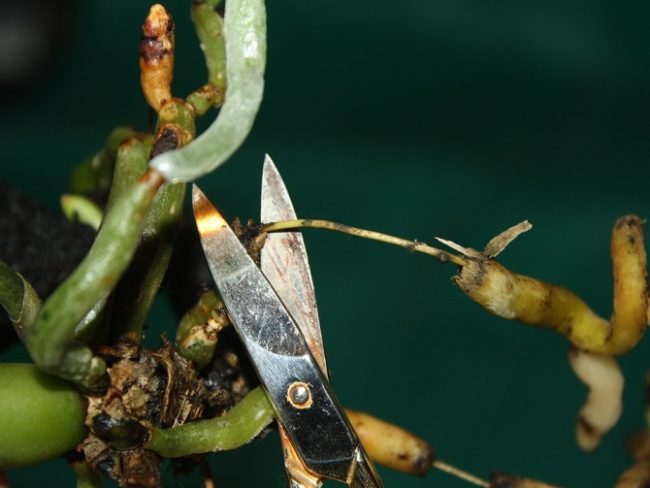
- Places of slices must be sanitized, especially if there is a living tissue on them. For these purposes, natural antiseptics such as crushed activated carbon or ground cinnamon are commonly used.
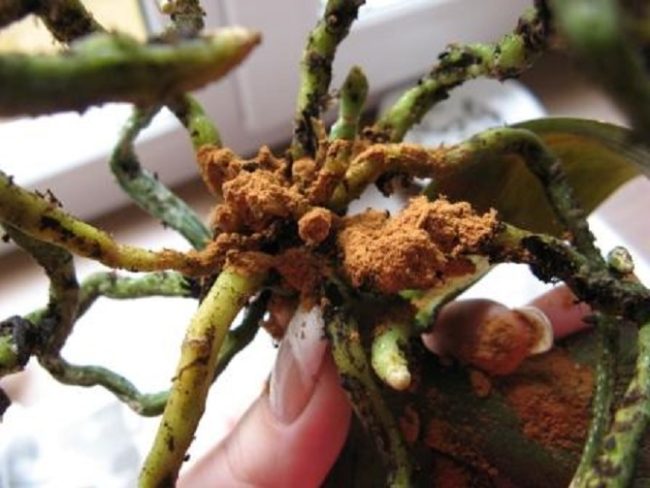
In addition, the treated plant should dry well, so you will have to abandon its watering in the coming days.
To avoid the appearance of rot on the roots, it is necessary to adjust the humidity in the room. Among other things, you should avoid frostbite, after which the roots become glass and die off quickly. If they, on the contrary, dry up, then you can put the pot with a flower on the wet clay, thus increasing the moisture level around the plant.
Preventing the emergence of new air roots
It is quite simple to prevent excessive occurrence of aerial roots in an orchid. For this you need to perform the following actions:
- adjust the irrigation system, allowing neither overflows nor drying of the soil;
- add lighting;
- transplant the plant in a more spacious pot;
- loosen downed soil.
Do not be afraid to buy phalaenopsis, considering the care of him a complex science. Proper watering, rejection of colored pots in favor of transparent plastic pots that promote root photosynthesis will certainly do their job, and the plant will repeatedly delight its owners with lush blooms.


